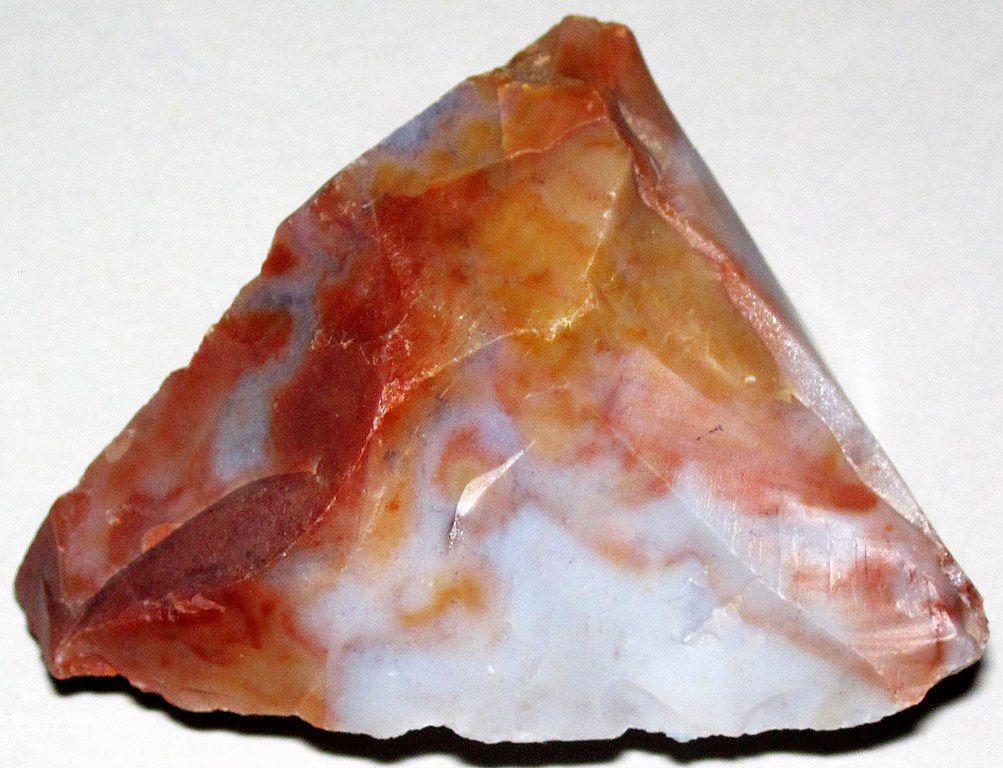Flint
It’s not just minerals like agate, jasper, carnelian, and chrysoprase that are made of cryptocrystalline quartz, sedimentary rocks like flint can be made of it too. Flint, a variety of the sedimentary rock chert, which is also mostly quartz, occurs in chalk and other soft sedimentary stone. It forms in gaps inside the chalk, as silicon (Si) dissolved in water collects and forms rounded lumps called “nodules.” Scientists think the silicon comes from the skeletons of ancient sponges–the living kind, as opposed to the ones in the supermarket–that built up along with all the calcium-based creatures that formed the chalk. When the chalk or other soft stone wears away, the hard flint nodules fall out. They can be white or kind of light gray on the outside, but inside they may be other colors, such as black, red, or brown, depending on what other minerals are mixed in. Flint takes advantage of the fact that when you chip quartz, it leaves a sharp edge. Indigenous people around the world where flint occurred realized this and chipped pieces of flint to create sharp points and blades for arrows, spears, knives, and axes. Later on in history, people also realized that if you hit a piece of flint in the right way against a piece of steel or pyrite, it would produce sparks. As a result, for a long time people have used it to start fires (such as campfires) and even to create the sparks that cause gunpowder to burn and fire a bullet from a gun.
| Formula | Group or Type | Shape | Hardness | Specific Gravity | Streak | Luster |
|---|---|---|---|---|---|---|
| — | — | — | 6.5–7.0 | 2.5–2.8 | — | — |
